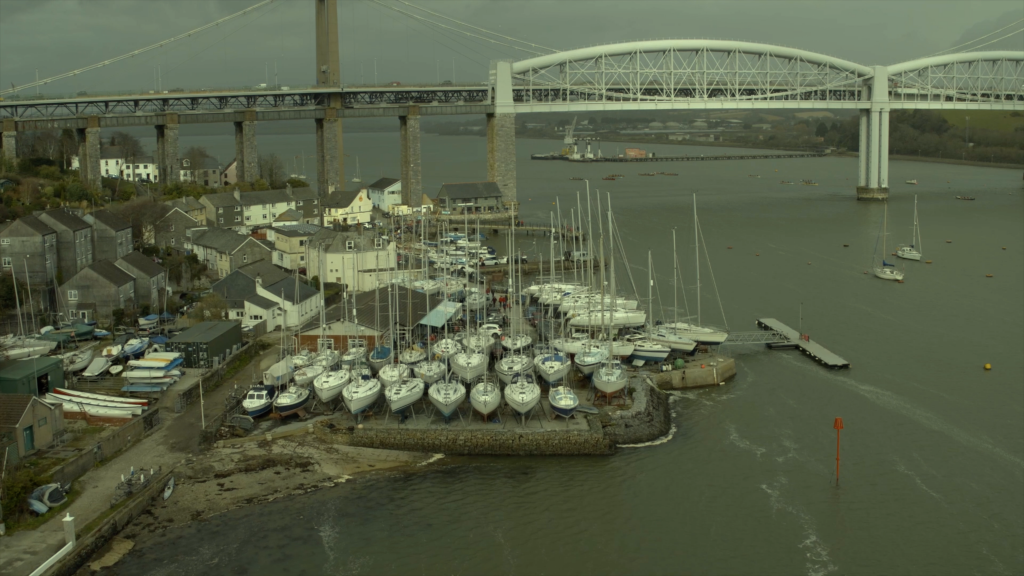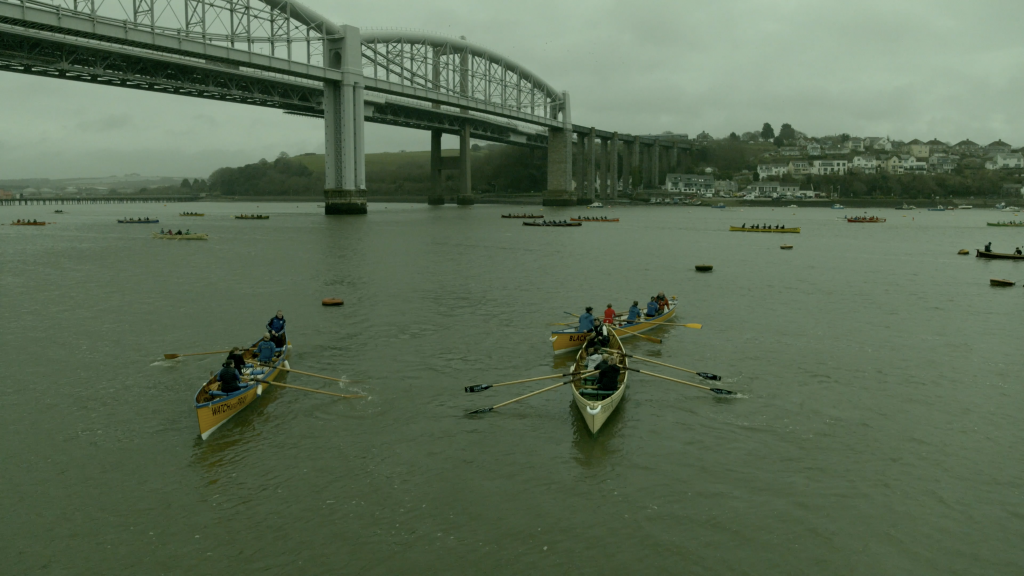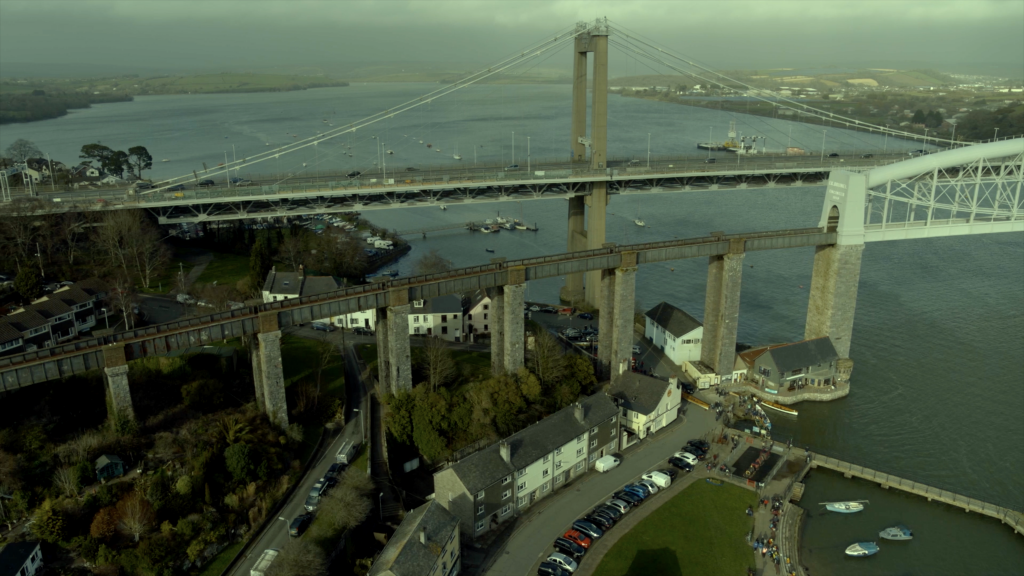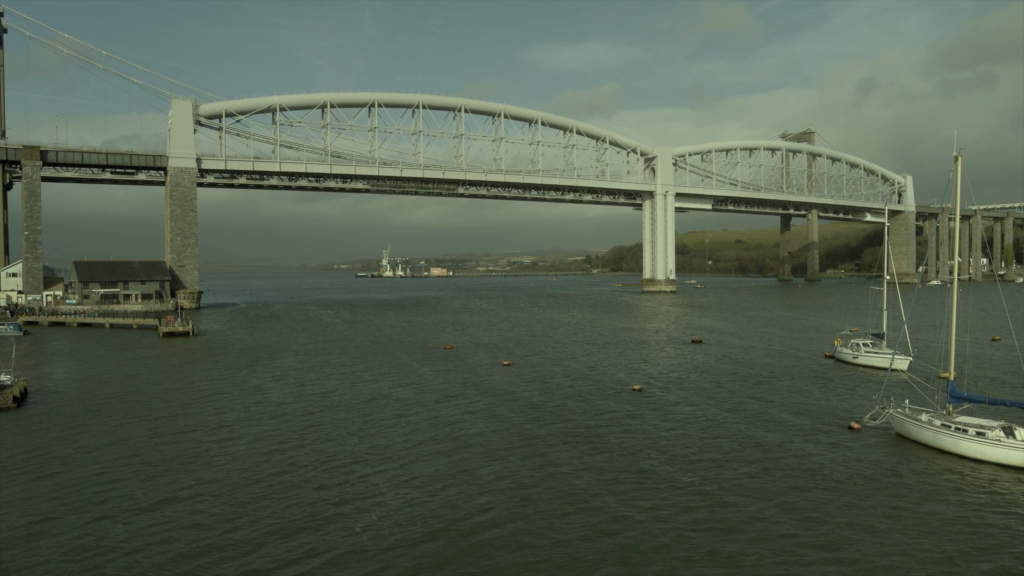
By Simon Ludgate
Just back from filming a new drone video on the Tamar River near Plymouth. The river divides two English counties – Devon and Cornwall.
It was a challenging shoot technically. Flying hazards like the beautiful bridges featured in the film, tall masts of boats and dozens of “gig” racing boats whizzing around in different directions all presented their own difficulties. Lots of different permissions.
86 boats took part.
Gigs are part of the culture in Cornwall spanning three hundred years. Smugglers slipped contraband ashore from ships moored off the southern coast of Cornwall in them.

Wooden-hulled and fast, these big seaworthy rowing boats could outrun the agents of the Crown. They conducted mainly unsuccessful campaign to catch the smugglers.
Wiley characters
The Revenue working for the Crown adopted the boats to keep up with the smugglers. The wiley characters were fitter and better versed in local geography and rarely caught.
Cornwall’s south coast is infamous for its strong tides and snaggle-toothed rocks lurking just below the waves.
The Royal Albert Bridge featured in my drone video is a railway bridge which spans the River Tamar in England between Plymouth, Devon and Saltash, Cornwall.

Its unique design consists of two 455-foot (138.7 m) lenticular iron trusses 100 feet (30.5 m) above the water, with conventional plate-girderapproach spans. This gives it a total length of 2,187.5 feet (666.8 m). It carries the Cornish Main Line railway in and out of Cornwall. It is adjacent to the Tamar Bridge which opened in 1962 to carry the A38 road.
The Royal Albert Bridge was designed by Isambard Kingdom Brunel. Surveying started in 1848 and construction commenced in 1854. The first span was positioned in 1857 and the bridge was opened by Prince Albert on 2 May 1859.
Namesake in Brunel’s honour
Brunel died later that year and his name was placed above the portals at either end of the bridge as a memorial. Work was carried out during the twentieth century to replace the approach spans and strengthen the main spans. It has attracted sightseers since its construction and has appeared in many paintings, photographs, guidebooks, postage stamps and on the UK £2 coin. Anniversary celebrations took place in 1959 and 2009.

The structure was the third in a series of three large wrought iron bridges built in the middle of the nineteenth century and was influenced by the preceding two. They were designed by Robert Stephenson.
The central sections of Brunel’s bridge are based on the design Stephenson used for the High Level Bridge across the River Tyne in 1849.
From 1849 to 1853 Brunel was erecting an iron bridge of his own. The Chepstow Railway Bridge carried the South Wales Railway across the River Wye. It featured a main truss of 300 feet (91 m) with a curving tubular main member. It had three conventional plate-girder approach spans of 100 feet (30 m). This was a similar solution to crossing the River Tamar at Saltash.
